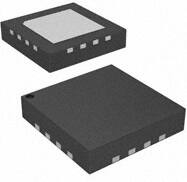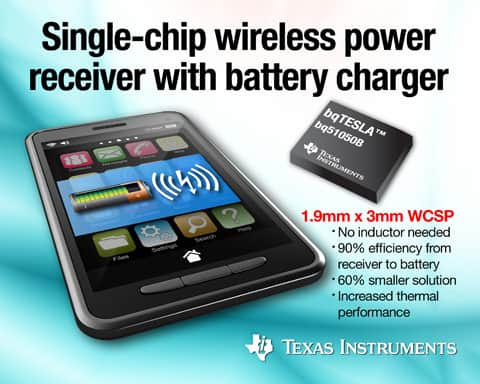New and Notable Mobile World Congress Developments for the RF Engineer
投稿人:电子产品
2013-07-18
Evidence was plentiful throughout the four-day 2013 Mobile World Congress (MWC) in Barcelona, Spain, that the world’s wireless mobile ecosystem continues to expand without abeyance. New advancements were announced, displayed, and demonstrated in mobile devices, product ICs, and wireless technologies such as contactless payments using Near Field Communications. Let’s begin with developments in NFC.
First-hand experience
Attendees in Barcelona were able to experience NFC first hand, starting with dedicated NFC badge lanes at the conference entrances. In addition, for attendees in possession of an NFC-capable handset the event showcased an integrated range of mobile NFC services both at the Mobile World Congress venue and in the city of Barcelona. For the first time, NFC touch points were placed throughout the exhibition floor, making it easy to get information as well as a variety of exhibitor offers and important downloads.
Semiconductor manufacturers participated in the NFC showcase by trotting out their latest components. NXP Semiconductors, for example, demonstrated its NFC solutions for office, home, retail, and smart city environments. One of these solutions is what the company calls MIFARE4MOBILE, which is an advanced mobile ticketing solution that allows NFC-enabled phones to be used for contactless ticketing applications on more than 650 transport systems around the world, via the company’s MIFARE technology. DigiKey offers a variety of MIFARE products on its website such as the PN544 NXP NFC controller featuring simultaneous multi-card management (ISO14443-A,B,B’, MIFARE) for mobile phones and portable equipment. The controller complies with all released NFC and ETSI/SCP SWP and HCI standards, guarantees interoperability with existing infrastructure, and provides a flexible platform for meeting GSMA requirements in next-generation NFC-enabled devices and services. It also offers fully-host-controllable power states, delivers a small footprint of 4.5 x 4.5 x 0.8 mm, and supports multiple secure elements.
Antenna tuning
With rapid expansion of the worldwide mobile spectrum, there is demand for analog semiconductor solutions that can handle more than 20 cellular frequency bands in addition to Wi-Fi and Bluetooth. The key elements in designs aimed at solving these challenges are antenna diversity and antenna tuning. Antenna diversity is a means for improving RF transmission performance, while antenna tuning enhances cellular operator’s available spectrum. At MWC, Skyworks announced its new antenna-tuning solutions, such as the forthcoming SKY13448-001 SPDT LTE/WCDMA/GSM transmit switch, which is controlled by an integrated general-purpose input/output interface with a control pin. This high-power, linear 0.1 to 3.0 GHz device is useful for switching coexistence notch filters for tuning antenna performance. It is offered in an 8-bump, 1.1 x 1.1 x 0.36 mm wafer-level chip-scale package.
Currently Skyworks offers a variety of switch SPDT WCDMA/GSM solutions in the DigiKey online catalog, one of which is the SKY13286-359LF (Figure 1) 0.1 to 6.0 GHz high-isolation absorptive switch for GSM/WCDMA base-station applications. At MWC, Skyworks also debuted its SKY13396-397LF CMOS silicon-on-insulator DPDT switch as well as its SKY19001-001 single-pole single-throw aperture-tuning field-effect transistor switch.

Figure 1: Skyworks Solutions' SKY13286-359LF switch.
Wireless power
As wireless power becomes an increasingly attractive market segment, Texas Instruments chose to use MWC to announce plans to develop multimode wireless power ICs for smartphones and other portable electronics. The company will continue to develop new bqTESLA wireless power receiver and transmitter ICs that comply with existing and future versions of the Wireless Power Consortium Qi Standard. TI’s advanced receiver and transmitter ICs include the recently announced bq51050B single-chip wireless receiver with integrated charger (Figure 2) and the bq500410A 3-coil transmitter with spatial freedom.

Figure 2: Texas Instruments' bq51050B wireless Rx with integrated charger.
TI also announced that it will create products that support both Qi and the Power Matters Alliance wireless-charging specification. TI’s first multimode solutions are expected later this year.
An LTE antenna with 9 bands
During MWC, Pulse Electronics announced development of a tunable, co-located LTE antenna structure that contains two LTE multiple-input, multiple-output (MIMO) antennas in the same end of one device, providing nine frequency bands of functionality in a volume of just 3.20 cm³. Called mCOMET (Figure 3), this tunable metal ring antenna configuration is aimed at smartphones using RF chips with a two-pole double-throw (2PDT) antenna switch and a metal ring feature.

Figure 3: Pulse Electronics mCOMET tunable LTE antenna with nine bands.
The configuration houses the antennas in a metal chassis with a dielectric antenna carrier and antenna volume of 10 x 74 x 5 mm, including USB, and with a minimum ground clearance on the printed-circuit board of two times 30 x 8 mm for the two antennas together. The primary and secondary antennas are located at the bottom end and on the side of the device, increasing the number of operating bands at the same end of the device. No additional space is needed for antennas, enabling more freedom of design. Frequency bands for both antennas are a low band of 698 to 960 MHz and high bands of 1,710 to 2,170 MHz and 2,500 to 2,690 MHz. The low-band envelope correlation coefficient (ECC) is below 0.5. This antenna has a minimized hand-effect so if the user's hand is covering one antenna, transmission is switched to the other antenna (2PDT switch). There are equal transmission line lengths from engine to antenna, so there are equal losses from the line. As it's a modular system, there are numerous integration possibilities.
Pulse Electronics offers a variety of 1-to 6-band antennas on the DigiKey website, where you can apply filter parameters (such as antenna type, number of bands, VSWR, gain, and termination) to better meet your design specifications.
White space solutions for broadband delivery
During MWC, The Technology Partnership (TTP), a leader in digital broadcast TV, satellite, cellular, and communications solutions using license-exempt spectrum, chose Freescale Semiconductor's RF solutions and QorIQ Qonverge BSC9131 base station-on-chip as the foundation of an innovative, low-cost solution for delivering high-speed broadband service over white space spectrum.
White space is license-exempt radio spectrum that exists between licensed TV transmissions. Globally, more than 100 MHz of prime UHF white space radio spectrum exists in many rural locations and it is characterized by excellent propagation characteristics ideal for long-range communication. Enabled by the right multicore SoC and RF solutions, the spectrum can be used to deliver data at high speeds across a distance of many miles. White space spectrum is ideal for providing fixed broadband Internet services to locations where the routing of cables or optical fiber is neither practical nor economical.
TTP and Freescale are collaborating to develop low-cost terminals and base stations engineered to support “last-mile” delivery of broadband service to consumers and small businesses. Similar in size to current-generation home routers, the TTP solution is engineered to deliver broadband over white space at speeds comparable to cellular LTE. By combining several TV channels and using directional antennas, data rates can be maximized. Freescale’s QorIQ Qonverge BSC9131 processor will handle the entire wireless stack from Layer 1 to transport as well as other processing duties for the TTP white space solution. The TTP design additionally includes Freescale’s MMZ09312B, and MML20211H advanced gallium arsenide (GaAs) monolithic microwave integrated circuit (MMIC) amplifiers featuring exceptional linearity and power efficiency.
MWC continues to be an important industry show where manufacturers, consumers, developers, and designers come together to share, learn, and develop new solutions — some of which may change the landscape of mobile electronics. Engineers can also count on getting the latest industry news as well as network with their peers, exchange technical concepts and ideas, and perhaps also solve issues that have been vexing them in recent projects. MWC 2014 will take place 24-27 February 2014, again in Barcelona.
免责声明:各个作者和/或论坛参与者在本网站发表的观点、看法和意见不代表 DigiKey 的观点、看法和意见,也不代表 DigiKey 官方政策。


